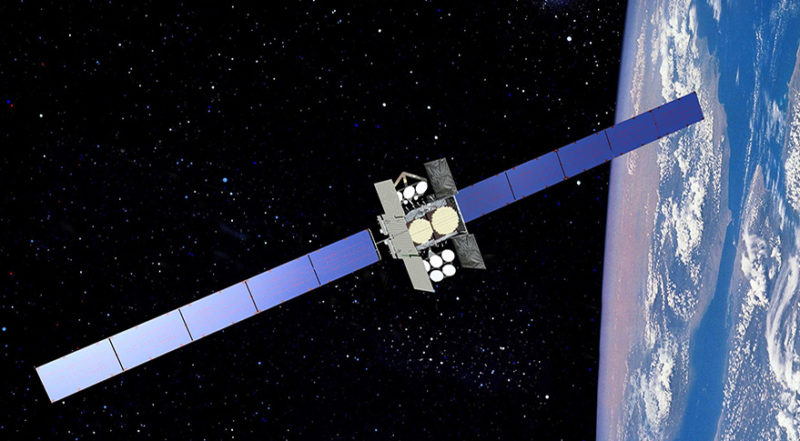Space Force Tested Geo-Location of Jamming Signals for WGS Satellites

A U.S. Air Force Wideband Global Satcom communications satellite.
Photo: Boeing
The U.S. Space Force said on Feb. 17 that its Space and Missile Systems Center’s (SMC) Wideband Global Satcom (WGS) Mitigation and Anti-Jam Enhancement (MAJE) program has demonstrated the geo-location of jamming signals.
SMC said that it conducted three system tests — virtually, due to COVID-19 restriction — in the final quarter of last year. The tests verified MAJE system design and the system’s ability “to provide telemetry and successfully locate signals interfering with WGS satellites” for the 10 Boeing WGS satellites, per SMC.
“With the support of MAJE prime contractor Boeing, test events were executed by a combined government and industry team,” SMC said. “Testing involved personnel from the Army’s Space and Missile Defense Command, Army Project Manager Defense Communications and Army Transmissions Systems, Boeing, and SMC working together virtually.”
MAJE is a series of software and hardware upgrades for the Army-operated Global SATCOM Configuration Control Element (GSCCE) ground system to detect, identify, geo-locate and Radio Frequency interference with the WGS 1-10 satellites.
Space Force plans to receive and launch WGS-11 in 2024. While WGS-11 will not have MAJE, it is to be able to shape its narrower beams against jamming threats and is to have twice the communications capacity of each of the current 10 WGS satellites. An addition of anti-jam MAJE capability for WGS-11 would have to go through the requirements process, SMC said.
An SMC “Pacesetter” program, WGS-11 is to use commercial practices to provide multiple smaller, more agile beams that could be more effective in an electronically contested environment.
As U.S. policy makers discuss the implications of their view of space as a warfighting domain and reported satellite jamming efforts by China and Russia, SMC said last July that MAJE testing in June verified the ability of ground stations for the U.S. military’s 10 WGS satellites to blunt electronic interference. SMC said that it virtually tested the First Article Test Increment 3 (FAT-3) of MAJE last June 18.
Virtual testing of MAJE’s FAT-4 in the final quarter of 2020 “showcased MAJE’s ability to accurately locate signals interfering with WGS,” SMC said on Feb. 17.
The first two MAJE tests in the last quarter of 2020 – before FAT-4 – were the Maintenance Engineering Evaluation, which verified system design and ease of system maintenance – and the Payload Application Software (PLAS) Formal Qualification Testing (FQT), which “demonstrated MAJE’s ability to provide satellite telemetry monitoring and control, as well as management of WGS specific payload functionality,” SMC said on Feb. 17.
FAT-5, the final increment of FAT testing, is to demonstrate that MAJE is ready for integration with Army subsystems.
The transition of MAJE to the Army for operational use is expected by spring next year. MAJE is to double the anti-jam capabilities of WGS for more than 16,000 users, Maj Shawna Matthys, SMC’s WGS-11+ program manager, said in a statement.
This article was originally published by our sister publication Defense Daily.